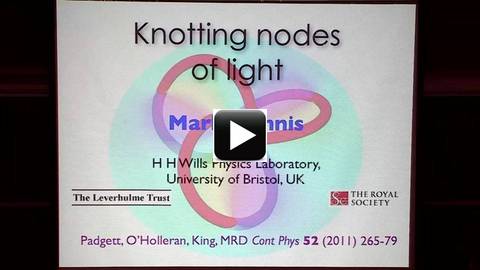Optical beams propagating in three-dimensional free space are complex
scalar fields, and typically contain nodal lines (optical vortices)
which may be thought of as generalized interference fringes and
topological singularities of phase. Optical vortices were originally
discovered by Hans Wolter in 1950 in his study of total internal
reflection, and are now a major area of study of classical light
fields, appearing ubiquitously in spatially varying wave functions.
Random wave fields, representing optical speckle patterns scattered
from rough surfaces, have a tangled skeleton of nodal lines, some of
which are closed loops, and others are infinite, open lines.
Computer simulations of random superpositions of plane waves
indicate that these lines have the fractal properties of brownian
random walks with characteristic scaling of the probability that
pairs of loops are linked together. Holographically-controlled laser
beams provide the opportunity to control the form of optical fields
and the nodal lines within them. Using the theory of fibred knots, I
will describe the design of superpositions of laser modes
(effectively solutions of the 2+1 Schrödinger equation) which contain
isolated knots and links. I will conclude by explaining how these
mathematical fields have been experimentally realized by the
experimental Optics group in Glasgow, UK.

To download: Right-click and choose "Save Link As..." (Other video options)